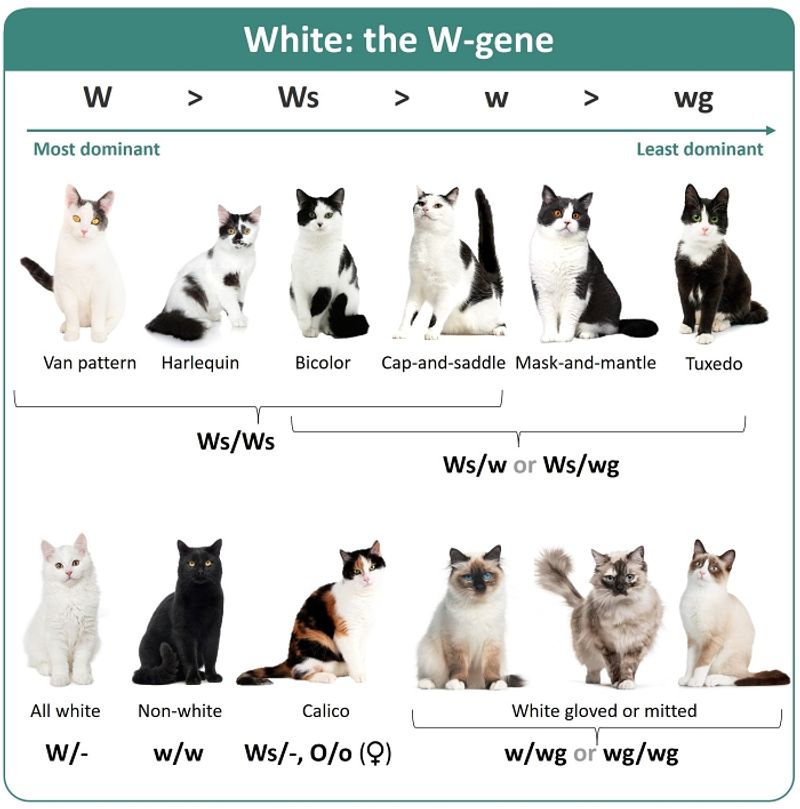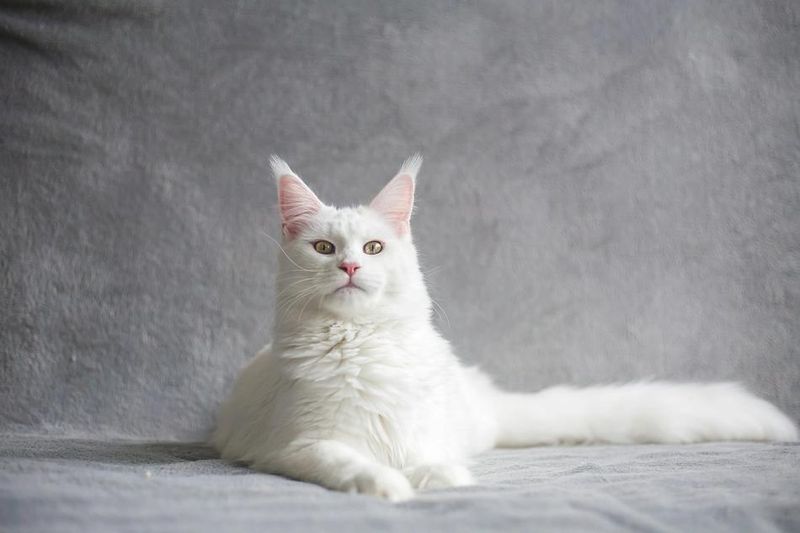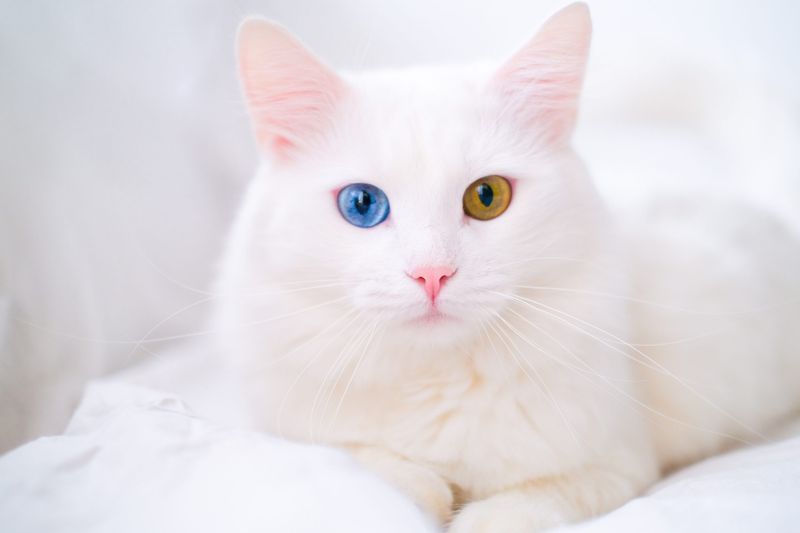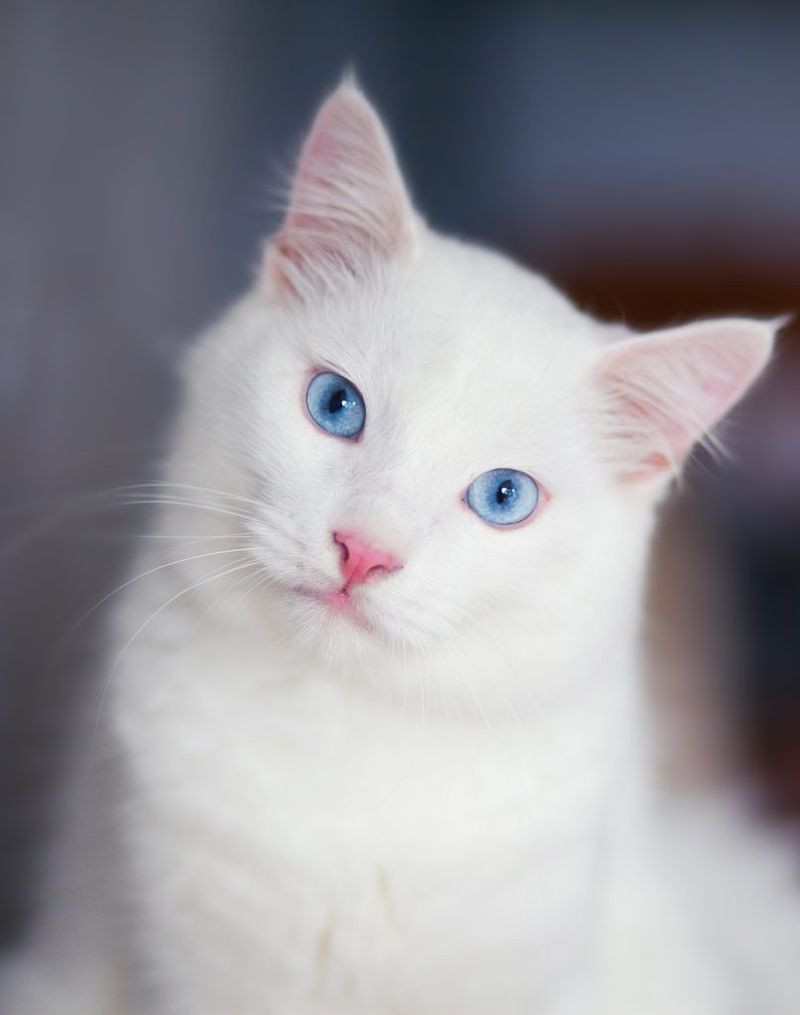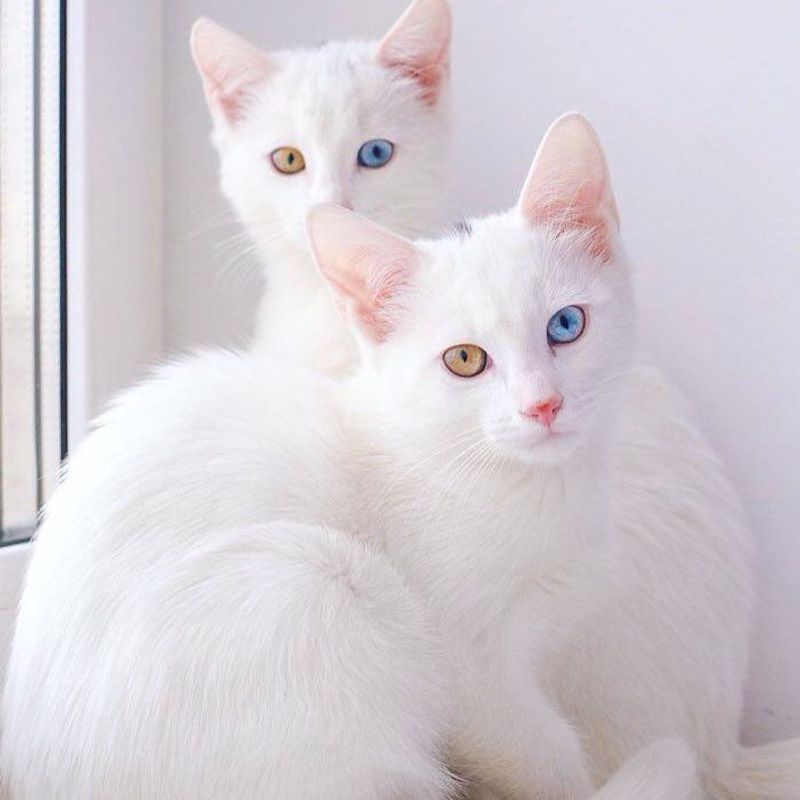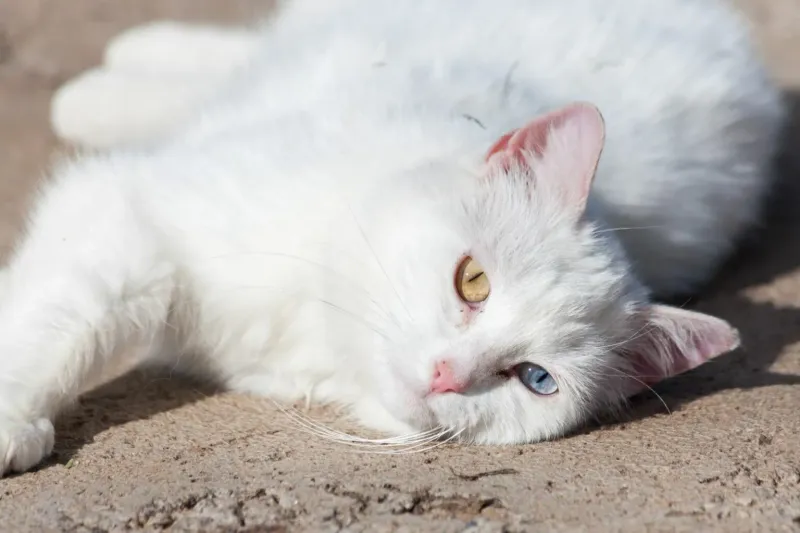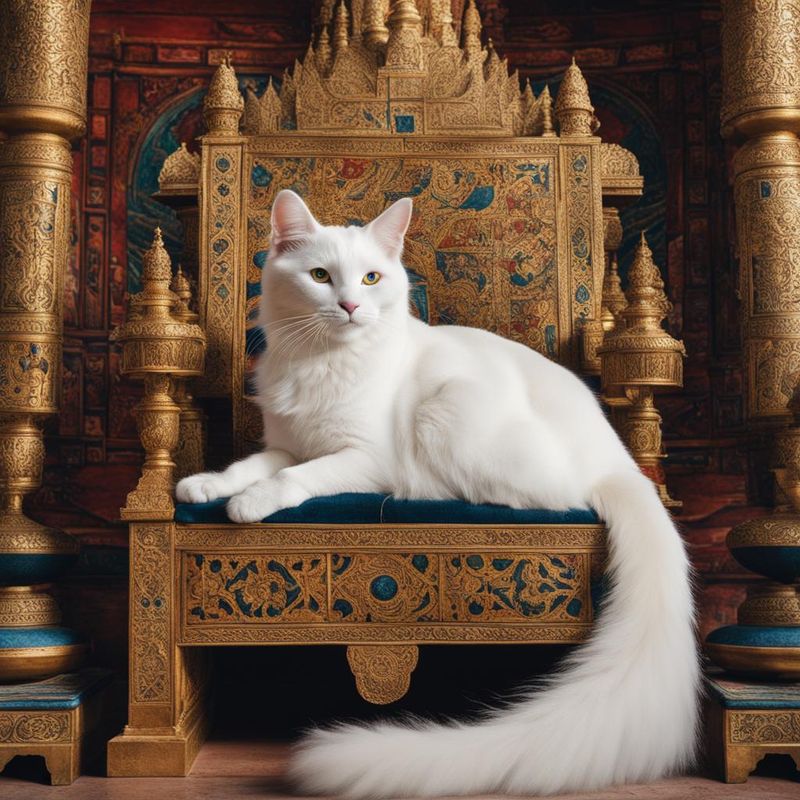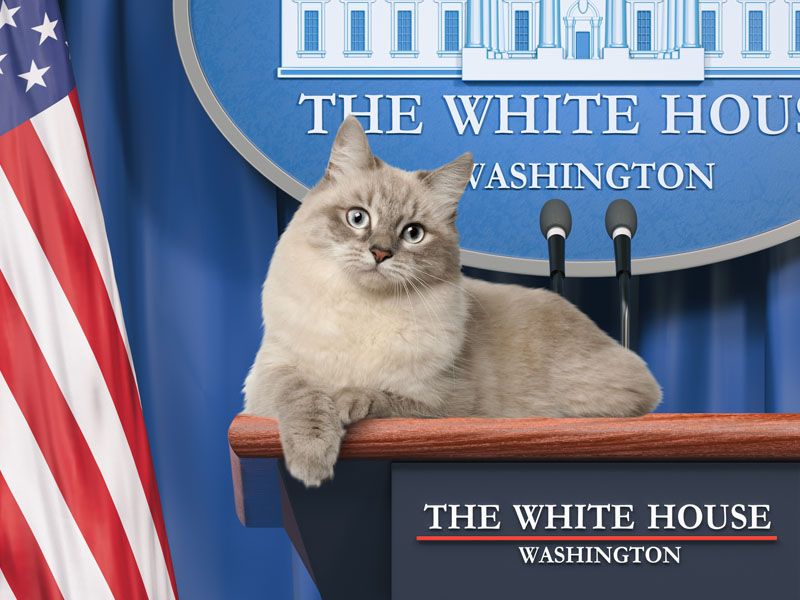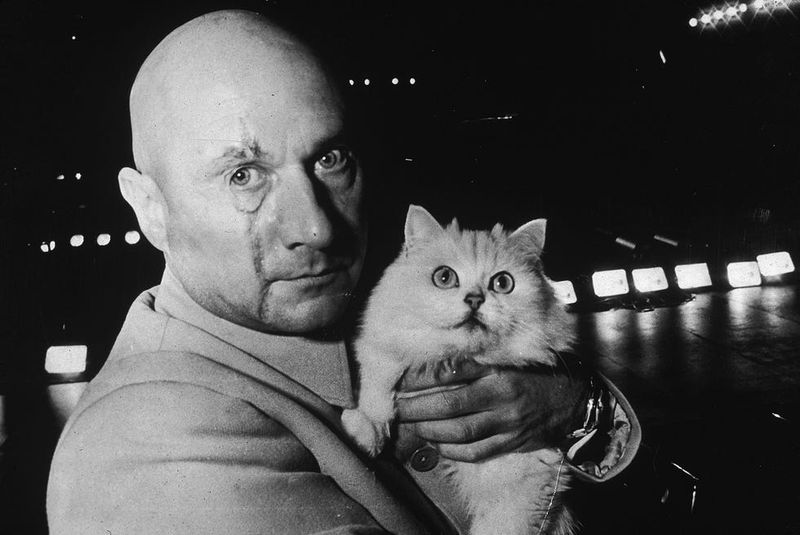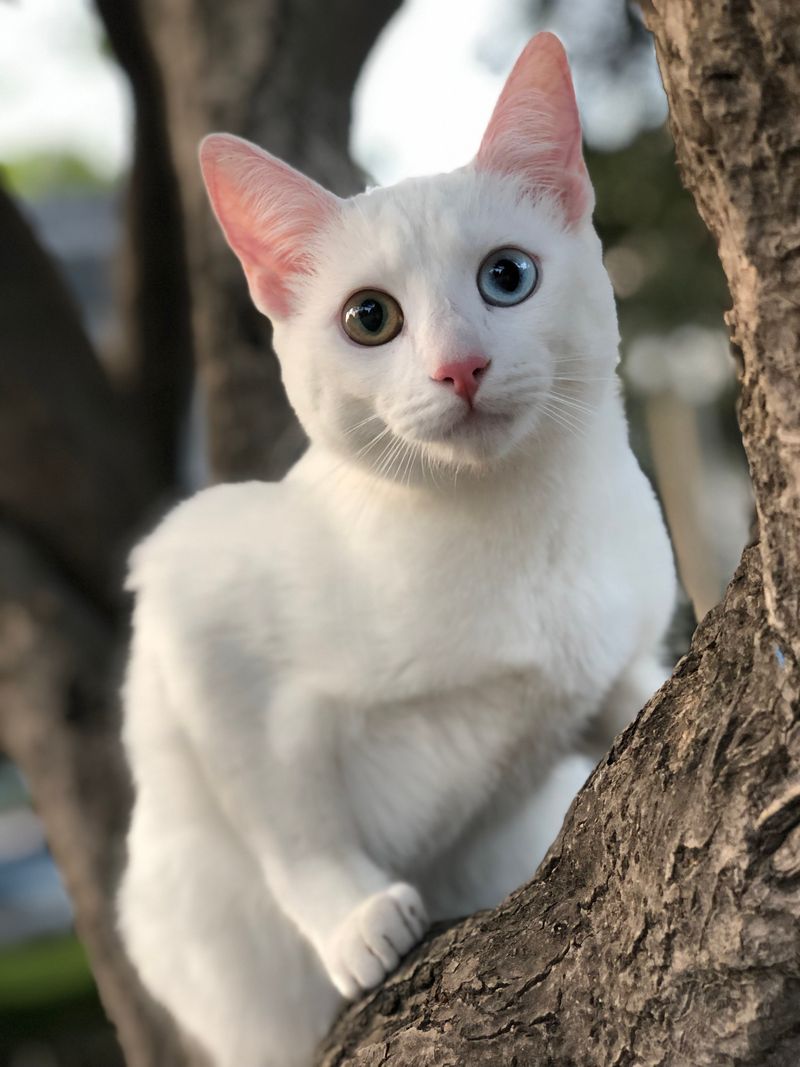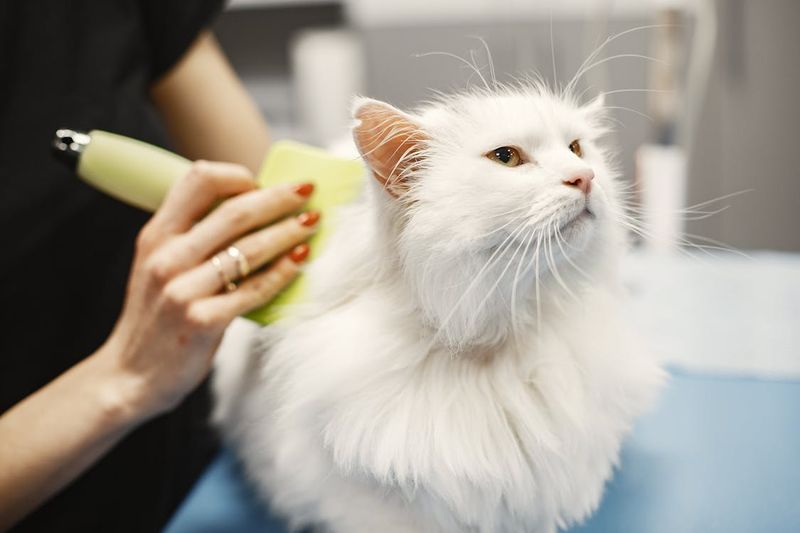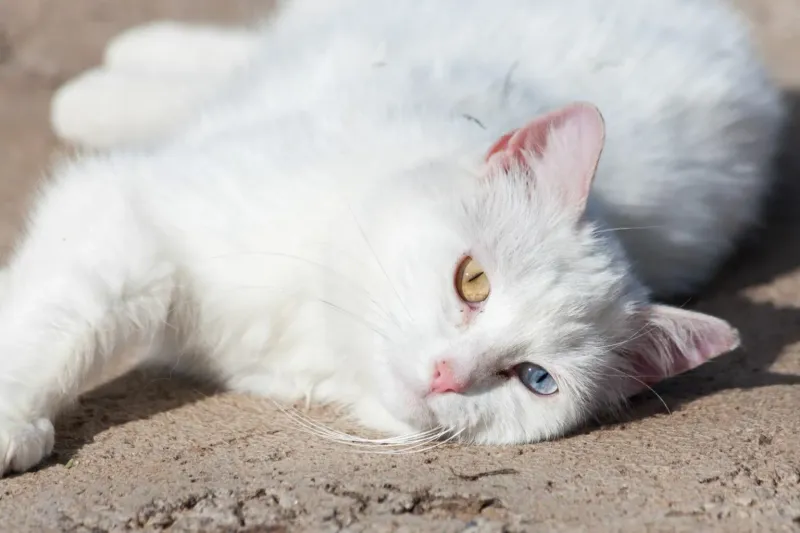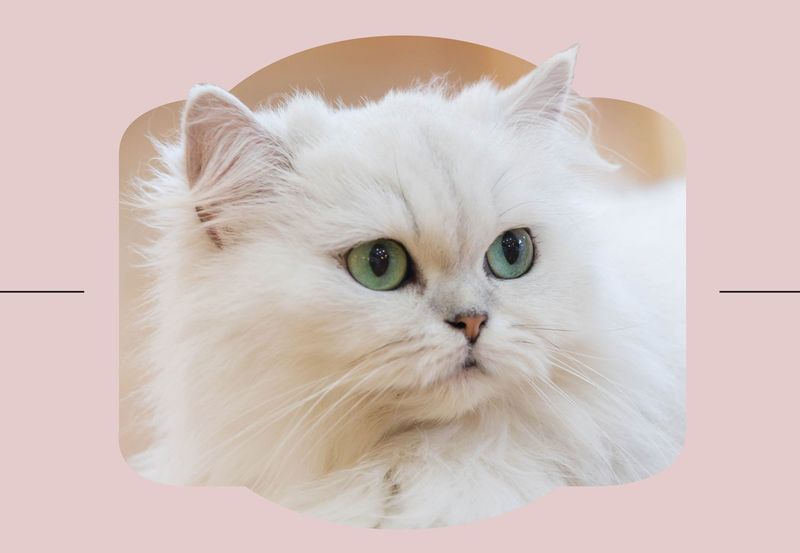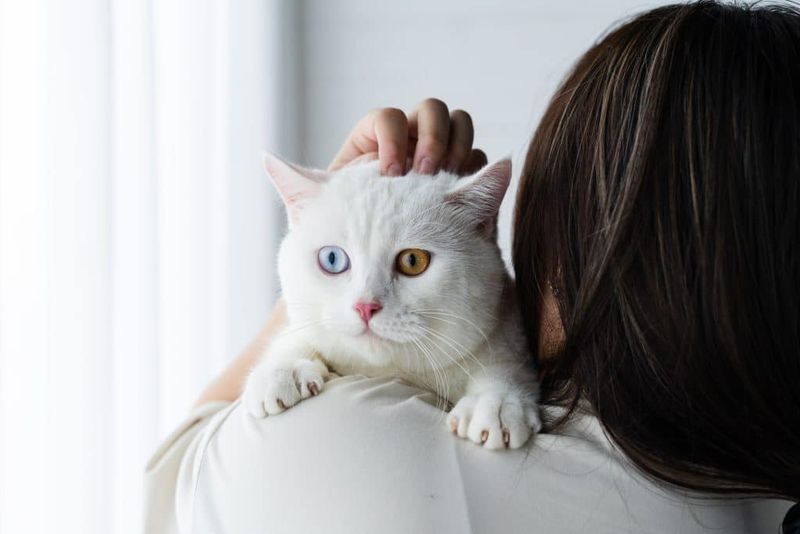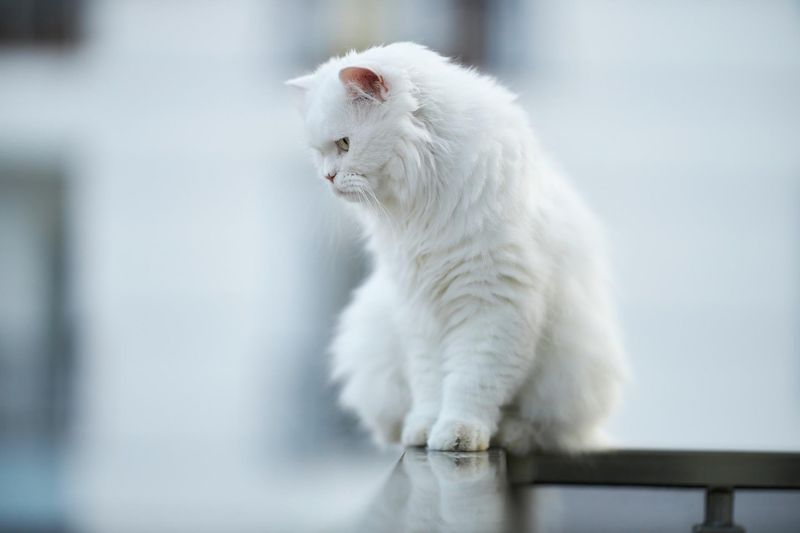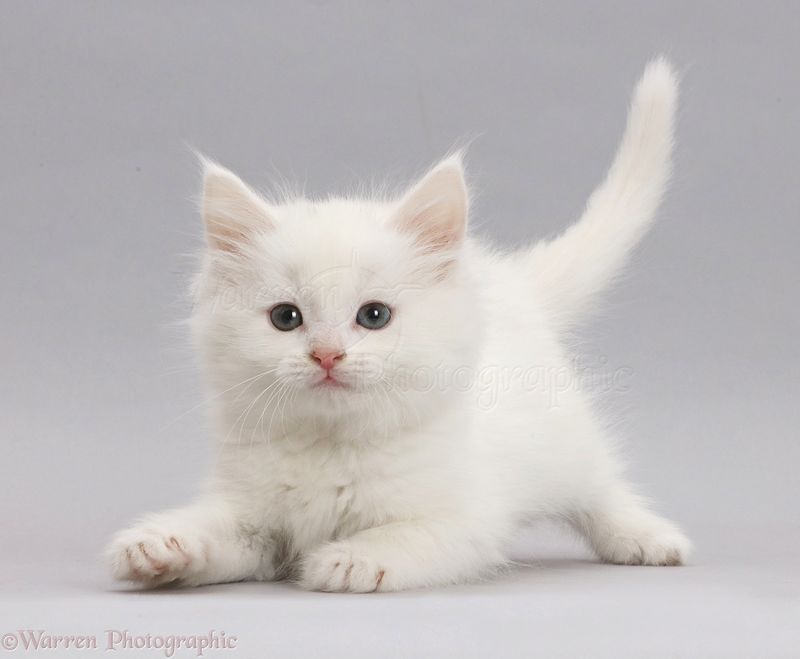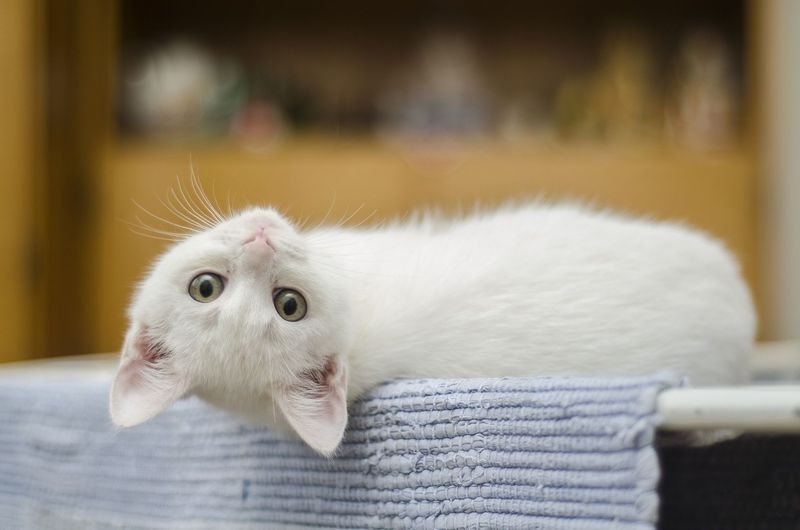📖 Table of Content:
- 1. Genetic Basis of White Fur
- 2. Diverse Breeds with White Coats
- 3. Unique Eye Colors
- 4. Deafness in White Cats
- 5. Not Albino
- 6. Sun Sensitivity
- 7. Cultural Significance
- 8. Presidential Companions
- 9. Popular in Media
- 10. Perceived Temperament
- 11. Rarity of Pure White Cats
- 12. Grooming Needs
- 13. Health Considerations
- 14. Lifespan
- 15. Affectionate Nature
- 16. Adaptability
- 17. Playfulness
- 18. Social Behavior
Thinking about bringing a white cat into your life? These stunning felines are more than just their snowy coats. In this post, we uncover 18 fascinating facts about white cats—from their unique genetics and eye color quirks to the surprising health considerations every future pet parent should know. Whether you’re curious about their personalities or potential for deafness, this guide will help you understand what makes white cats so special—and how to care for them with confidence.
1. Genetic Basis of White Fur
White cats owe their striking appearance to the dominant W gene, a genetic marvel that suppresses other coat colors. This genetic trait creates a canvas of pure white fur. It’s a fascinating aspect of feline genetics, where one gene dictates such a dramatic effect. Imagine a genetic switch that turns off all other colors, leaving only white. This phenomenon is a testament to the wonder of nature’s design. Understanding the genetic basis helps appreciate the uniqueness of white cats, making them even more special.
2. Diverse Breeds with White Coats
It’s a delightful surprise to learn that many cat breeds can don white coats. From the majestic Persian to the elegant Turkish Angora, these felines wear their white fur with pride. American Shorthairs and Siamese also join the ranks, each breed adding its unique charm. This diversity in breeds showcases the wide array of white-coated cats available. Whether you’re drawn to the plush coats of Persians or the sleek elegance of Siamese, there’s a white cat out there for every preference.
3. Unique Eye Colors
White cats often boast an array of eye colors that can be as captivating as their fur. Imagine a cat with one mesmerizing blue eye and the other a striking green. Such unique eye colors are a hallmark of many white cats, adding to their allure. These eyes don’t just enhance their beauty; they captivate with their mystery and depth. The interplay of different eye colors against a white backdrop is a sight to behold. It’s a visual harmony that enchants and intrigues.
4. Deafness in White Cats
A significant number of white cats, particularly those with blue eyes, are born deaf. This trait is linked to the genetic factors responsible for their white fur. It’s a reminder of the intricate connection between genetics and physical traits. Despite this, many deaf white cats live full and joyful lives, adapting remarkably well to their environment. They often develop heightened senses of sight and touch. Embracing a deaf white cat means appreciating their resilience and unique ways of interacting with the world.
5. Not Albino
Contrary to common misconceptions, white cats are not albino. While albino cats lack pigmentation entirely, white cats have pigmentation in their eyes and skin. This distinction is crucial, as it affects their appearance and health. Albino cats are more prone to certain health issues due to the absence of pigmentation. White cats, however, have some color in their eyes and skin, offering a different set of characteristics. Understanding this difference enriches our knowledge about these beautiful creatures.
6. Sun Sensitivity
White cats, with their lack of fur pigmentation, are more susceptible to sunburn, particularly on delicate areas like the ears, eyelids, and nose. It’s a trait that demands extra care and attention from owners. Protecting these cats from prolonged sun exposure is essential to prevent skin damage. This sun sensitivity is a reminder of the delicate balance in nature, where beauty often comes with vulnerabilities. Owners must be vigilant, providing shade and protection to maintain their cat’s health and well-being.
7. Cultural Significance
In various cultures, white cats are symbols of good luck and prosperity. Their pristine coats are associated with purity and positivity. This cultural significance adds a layer of mystique to their already charming presence. Owning a white cat can feel like having a talisman of fortune in your home. This belief in their lucky nature spans across different regions, making them highly sought after. It’s fascinating how these cats have woven themselves into the fabric of cultural lore and tradition.
8. Presidential Companions
Throughout history, several U.S. presidents have enjoyed the companionship of white cats. Presidents like Rutherford B. Hayes, Gerald Ford, and Jimmy Carter had these elegant creatures as part of their lives. This connection to historical figures adds a dignified charm to white cats. Imagine a cat prowling the halls of the White House, a silent observer of history in the making. Such stories add a rich tapestry of anecdotes and connections to notable personalities, enhancing their allure.
9. Popular in Media
White cats have graced the silver screen, becoming iconic figures in film and television. Remember the white Persian cat in the James Bond movie “From Russia with Love”? This feline became a symbol of elegance and mystery. White cats in media often embody sophistication and intrigue, drawing audiences with their regal demeanor. Their presence on screen adds an extra layer of allure to their mystique. These cats have an undeniable star quality, making them memorable characters in popular culture.
10. Perceived Temperament
White cats are often perceived as calm and shy, projecting an aura of tranquility. However, their personalities can be as diverse as their eye colors. Each cat brings its unique temperament, influenced by its environment and upbringing. This perceived calmness might be a result of their serene appearance, but underneath lies a range of behaviors and moods. Owners often find delight in discovering the unique personalities of their white feline friends. It’s a testament to the individuality present even within perceived stereotypes.
11. Rarity of Pure White Cats
Pure white cats are a rare find, making up only about 5% of the total cat population. This rarity adds an element of exclusivity to owning one. The allure of a pure white cat lies not just in its beauty but in its uncommonness. This rarity makes these cats highly desirable among feline enthusiasts. Owning a pure white cat is like having a rare gem, a treasure that stands out in the world of pets. It’s a privilege to share life with such a unique creature.
12. Grooming Needs
With their light-colored fur, require regular grooming to maintain their pristine appearance. Their fur can easily show dirt, necessitating frequent brushing and cleaning. This grooming routine is not just about aesthetics; it contributes to their overall health and comfort. Keeping their coats clean helps prevent matting and skin issues. For owners, this grooming ritual can become a bonding experience, where the cat feels cherished and cared for. It’s a small price for the joy of having such a beautiful pet.
13. Health Considerations
White cats may be prone to specific health issues, particularly skin conditions due to sun exposure. This vulnerability requires attentive care and prevention strategies. Regular veterinary check-ups are essential to monitor their skin health. Owners must be proactive in protecting their cats from harmful sun rays by providing shaded areas and indoor comfort. This attention to health extends their lifespan and quality of life. Understanding these health considerations ensures that white cats remain happy and healthy companions.
14. Lifespan
With proper care, white cats can lead long and healthy lives, often reaching 15 years or more. Their longevity is a testament to the resilience and vitality of these elegant creatures. Owners who invest time and love into their care are rewarded with years of companionship. The potential for a long lifespan is one of the many joys of owning a white cat. These cats become cherished family members, sharing life’s moments over the years. Their presence enriches homes and hearts.
15. Affectionate Nature
White cats are known for their affectionate and friendly nature, often forming strong bonds with their human companions. Their warmth and friendliness make them delightful additions to any home. This affectionate behavior is not just a trait but a reflection of their desire for companionship. White cats often seek attention and love, returning it with purrs and gentle nudges. Their loving nature makes them perfect for families looking for a feline friend to share their lives with.
16. Adaptability
White cats are known for their adaptability, thriving in various living environments. Whether in a bustling city apartment or a quiet country home, these cats adjust well as long as their needs are met. Their adaptability stems from their curious and flexible nature. Owners find joy in watching their white cats explore and settle into their surroundings, showcasing their resourcefulness. This adaptability ensures that they remain content and happy, provided they receive love, care, and attention.
17. Playfulness
Despite their serene appearance, white cats are often playful and full of energy. They enjoy interactive toys and games, bringing joy and laughter to their owners. This playful nature is a delightful surprise, revealing a zest for life and fun. Owners can engage their white cats in various activities, from chasing feather toys to exploring new environments. This playfulness keeps them active and healthy, creating a lively atmosphere in any home. It’s a reminder of the vibrant spirit hidden beneath their calm exterior.
18. Social Behavior
White cats are often social creatures, enjoying interaction with humans and other pets. They thrive in multi-pet households, where they can engage in social play and companionship. This social behavior makes them ideal for families with multiple pets. Their ability to relate well with others adds a harmonious dynamic to the household. Owners find joy in watching their white cats form bonds and friendships, enhancing the sense of community in the home. It’s a heartwarming trait that enriches the pet-owning experience.

